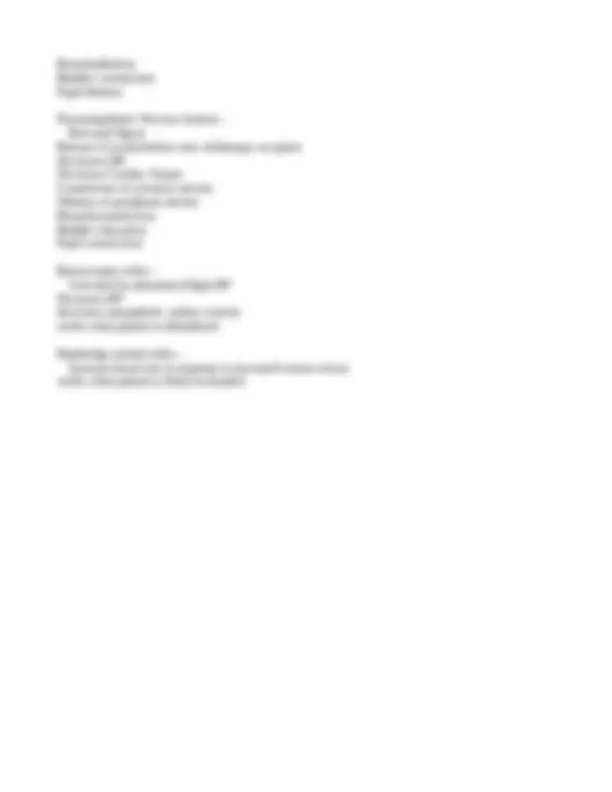



Study with the several resources on Docsity

Earn points by helping other students or get them with a premium plan


Prepare for your exams
Study with the several resources on Docsity

Earn points to download
Earn points by helping other students or get them with a premium plan
Community
Ask the community for help and clear up your study doubts
Discover the best universities in your country according to Docsity users
Free resources
Download our free guides on studying techniques, anxiety management strategies, and thesis advice from Docsity tutors
ANCC Cardiac & Vascular RN Certification.docx
Typology: Exams
1 / 3

This page cannot be seen from the preview
Don't miss anything!


Location of Base of heart - It's the widest part Runs across 2nd intercostal space Location of the Heart - Approx. 2/3 to the left of the mid-sternal line location of apex of heart - Tip of term-7the heart at the 5th intercostal space, medial to left mid-clavicular line Location of point of maximal impulse - Apex of Heart Systole - Isovolumetric ventricular contraction Ventricular ejection Isovolumetric ventricular contraction - Atria relaxed All Valves are closed Ventricular Ejection - Atria relaxed Ventricles contract AV valves: Closed Aortic/Pulmonary Valves: Open Diastole - Isovolumetric ventricular relaxation Ventricular filling Isovolumetric ventricular relaxation - Atria relaxed Ventricles relaxed All Valves: Closed Ventricular Filling - Atria relaxed then contracts Ventricles relaxed AV valves: Open Aortic/pulmonary vales: Closed SA Node -
pacemaker of the heart Rate: 60-100 bpm Stimulates atria contraction Heavily innervated by both SNS and PNS AV Node - Back-up Pacemaker to SA node Junctional rhythms rate: 40-60 bpm Slows impulses coming from SA to the ventricle Screens rapid atrial impulses to protect ventricles Strong PNS/ Weak SNS Purkinje Fibers - Individual cells that directly stimulate ventricular muscle contraction Back-up pacemaker if SA and AV node fail to fire Idioventricular rhythms: 20-40 bpm Strong SNS/Weak PNS P wave - depolarization of SA node and atria Atrial contraction QRS complex - Q wave: depolarization of interventricular septum R and S waves: depolarization of right and left ventricles ST segment - early repolarization of the ventricles T wave - Late ventricular repolarization QT interval will be longer when.. - the HR is slower QT interval will be shorter when.. - the HR is faster QT interval based on patient's HR formula -